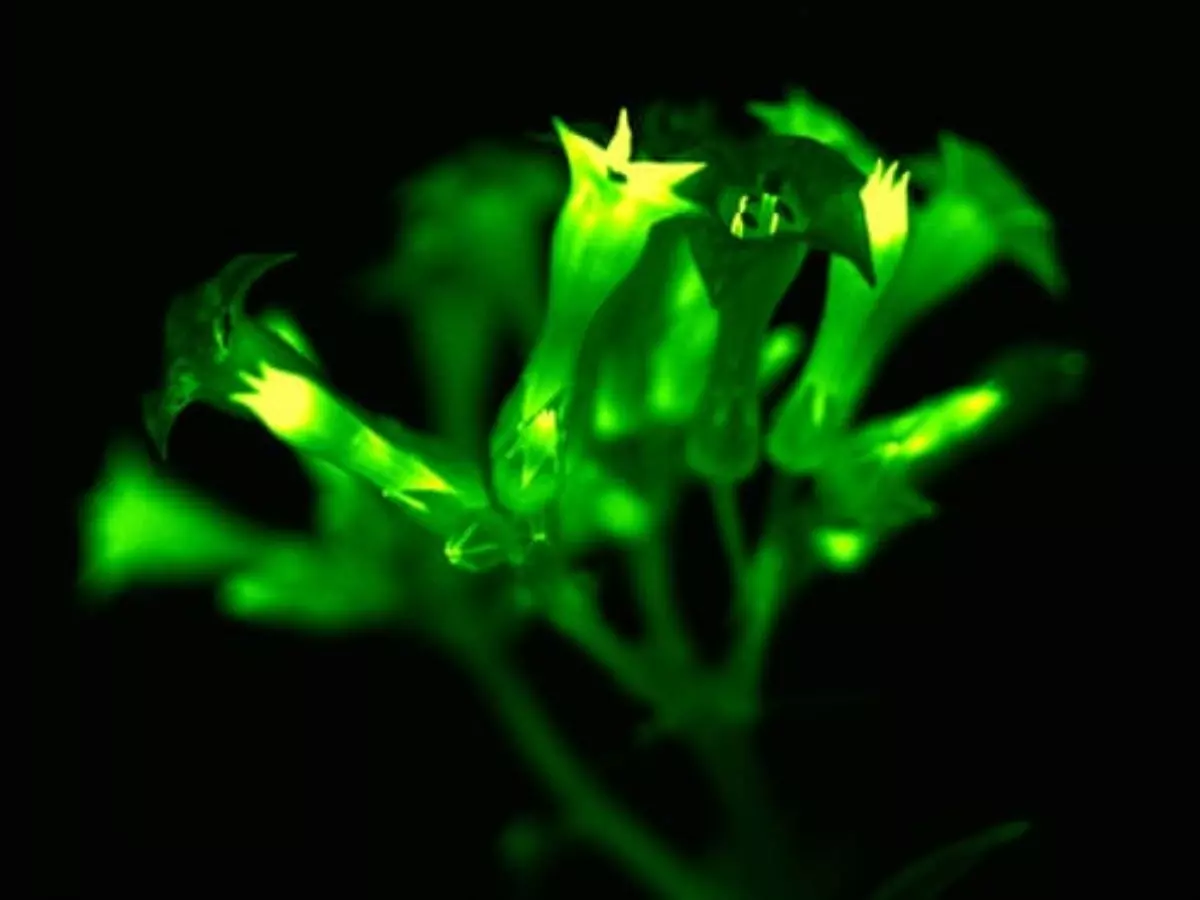Scientists Develop Glowing Plants Using Mushroom Genes; Might Be Available For Home Decor Soon!
Scientists are reportedly creating light emitting plants in laboratories. Claim the glowing green plants will not only add beauty to your home decor but also help them explore the inner workings of plants in new ways. Technology can be used to visualise activities of different hormones inside the plants over the lifetime of the plant.

When you saw James Cameron¡¯s Avatar, did you not wish that all those glowing plants could exist in real life? Well, the day's not far when that just might turn into reality as scientists are reportedly creating light emitting plants in laboratories.
They claim the glowing green plants will not only add beauty to your home decor but also help them explore the inner workings of plants in new ways.
 Planta/MRC London Institute of Medical Sciences
Planta/MRC London Institute of Medical Sciences
¡°In the future this technology can be used to visualise activities of different hormones inside the plants over the lifetime of the plant in different tissues, absolutely non-invasively. It can also be used to monitor plant responses to various stresses and changes in the environment, such as drought or wounding by herbivores,¡± The Guardian quoted Dr Karen Sarkisyan, the CEO of Planta, the startup that led the work, and a researcher at Imperial College London as saying.
He further said, ¡°We really hope to bring this to the market in a few years from now, once we make them a bit brighter, once we make the ornamental plants with this new technology, and once of course they pass all the existing safety regulations,¡± added.
Many types of animals, microbes and mushrooms glow by emitting light, and the phenomenon is known as bioluminescence. This occurs when ¡®enzymes act on chemicals known as luciferins within the organism, resulting in energy being released in the form of light¡¯. However, bioluminescence does not occur naturally among plants.
 Planta/MRC London Institute of Medical Sciences
Planta/MRC London Institute of Medical Sciences
The Guardian reports that a team of colleagues based in Russia and Austria wrote in the journal Nature Biotechnology says Sarkisyan about how they inserted four genes from a bioluminescent mushroom called Neonothopanus nambi into the DNA of tobacco plants. ¡®These genes relate to enzymes that convert caffeic acid, through a series of steps, into a luciferin that emits energy as light, before turning the resulting substance back into caffeic acid,¡¯ the report said.
The resultant plant glows both in the dark and in the daylight.
However, the team found that ¡®the site of the luminescence changed as the plants grew, and luminescence generally decreased as leaves aged and increased where leaves became damaged¡¯. Flowers produced the most luminescence.
 Planta/MRC London Institute of Medical Sciences
Planta/MRC London Institute of Medical Sciences
Sarkisyan said that in the future the team could insert the fungal genes into the plant¡¯s DNA near genes that were activated by certain hormones. ¡°You should be able to see the light coming only from the tissues where the hormone is currently active,¡± he said.
The research on glowing plants makes one wonder if they will be available to light up streets or Christmas trees. Gary Foster, a professor in molecular plant pathology at the University of Bristol believes that experiments will mainly be used by scientists rather than for applications such as plant-based street lights, but are nonetheless welcome.
